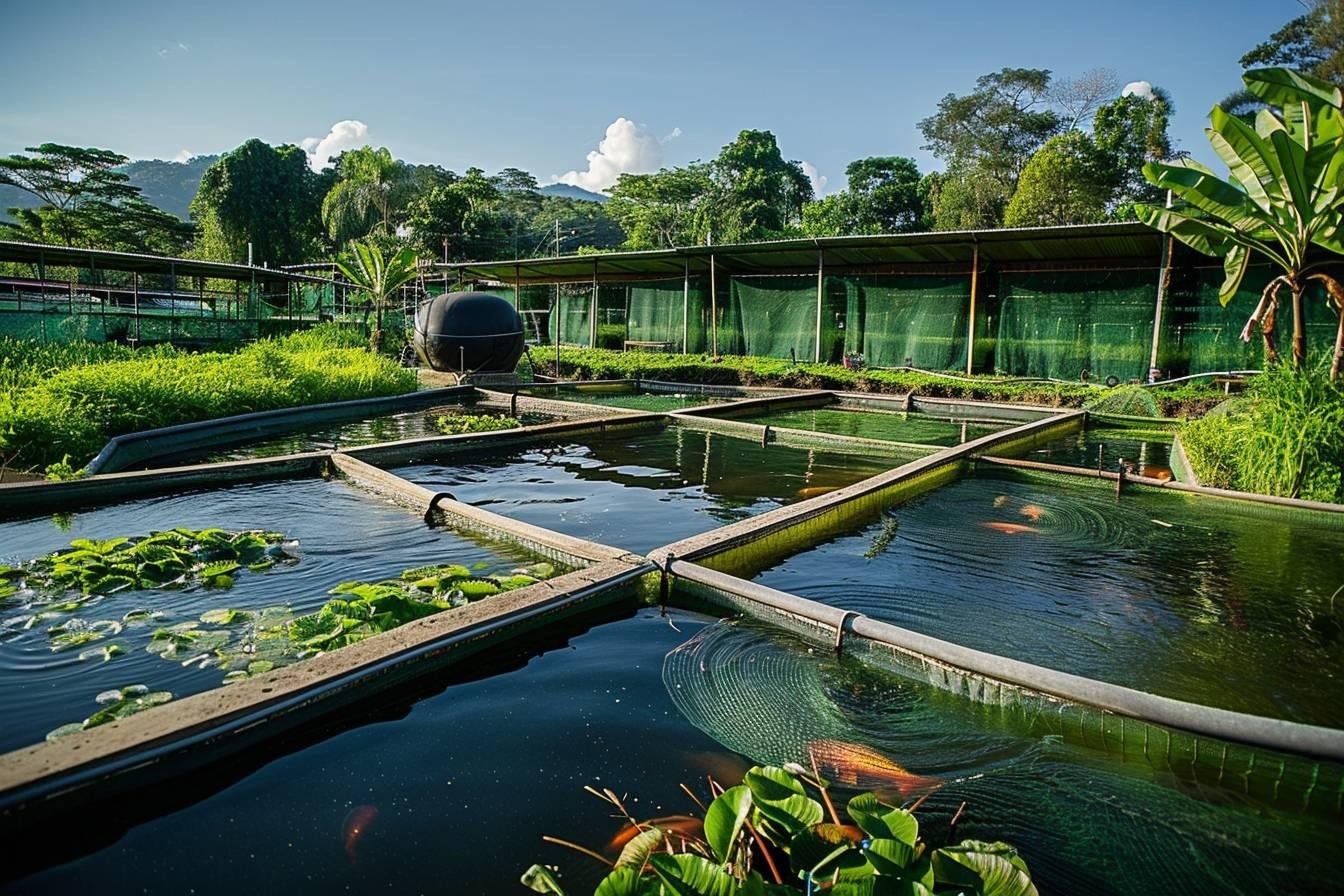The article in brief
This article explores the growth and challenges of tilapia aquaculture in the Philippines, an industry that is crucial to the country's economy.
- Development the GET-ExCEL strain, adapted to local conditions
- Key factors : aeration systems, advanced methods, government support
- Technological innovations with the use of SNP markers
- Challenges: sustainable water management, disease prevention
- A promising outlook forfuture expansion in the industry
Le tilapia in the Philippines is a subject that has fascinated me for years. As a department manager in a pet shop, I had the opportunity to observe at close quarters the evolution of this interesting species in the archipelago. Allow me to share with you my knowledge of this incredible fish, which plays a crucial role in the economy and diet of the Filipinos.
The rise of tilapia aquaculture in the Philippine archipelago
The tilapia industry has become a pillar of the Philippine economy, and not by chance. Nile tilapia (Oreochromis niloticus) has established itself as the country's flagship aquaculture species. I still remember my first visit to a fish farm in the Philippines, when I was impressed by the scale of the facilities and the know-how of the local farmers.
The dominant strain of tilapia in the Philippines is GET-ExCEL, a composite variety partially derived from GIFT (Genetically Improved Farmed Tilapia). This strain has been specially developed to adapt to local conditions and optimise production. Thanks to its improved genetic characteristics, it offers a better growth rate and greater resistance to disease.
Despite the progress already made, there is still significant potential for growth and expansion of tilapia aquaculture in the Philippines. The average technical efficiency of production is currently 0.44, indicating that there is still room to improve farming practices and increase yields.
Factors influencing tilapia production
During my discussions with Filipino fish farmers, I was able to identify several key factors that significantly influence the technical efficiency of tilapia production:
- The use of ventilation systems
- Adopting advanced growing methods
- Access to government support
These factors play a crucial role in optimising yields and ensuring the sustainability of farms. In addition, in certain regions of the Philippines, the size of rearing ponds and the stocking rate have a significant impact on tilapia production.
Technological innovations in tilapia farming
Scientific advances are constantly improving tilapia farming techniques. Molecular tools using SNP (Single Nucleotide Polymorphism) markers have been developed to identify different strains of tilapia. This technology enables breeders to select the best lines and constantly improve the genetic quality of their stocks.
I remember attending a demonstration of these tools at a trade show. It was fascinating to see how a simple DNA analysis could reveal so much information about the characteristics of a fish!
Biology and ecology of tilapia in the Philippines
Le Nile tilapia is an incredibly adaptable species. Although originally from Africa, it has acclimatised perfectly to conditions in the Philippines. It is a freshwater and brackish fish, capable of living in a variety of habitats including rivers, lakes and even irrigation channels.
Amateur of Corydoras paleatus temperature: ideal conditions for this fishI'm always fascinated by the adaptability of different aquatic species. Tilapia, with its versatility, is a perfect example of this adaptability.
Feeding and reproduction of tilapia
The tilapia's diet consists mainly of phytoplankton and benthic algae. This makes it a relatively easy species to farm, as it does not require expensive animal protein. The following table summarises the main biological characteristics of tilapia:
| Features | Description |
|---|---|
| Main power supply | Phytoplankton and benthic algae |
| Sexual maturity | 3 to 6 months (depending on temperature) |
| Reproduction temperature | Above 20°C |
| Laying frequency | Several times a year |
| Incubation of eggs | In the female's mouth for about a week |
Tilapia reproduction is particularly interesting. The females incubate the eggs in their mouths for around a week, providing optimum protection for their offspring. It's a fascinating sight that I've had the chance to observe on several occasions during my visits to fish farms.
Challenges and opportunities for tilapia aquaculture in the Philippines
Despite the success of tilapia farming in the Philippines, the sector is facing a number of challenges. Sustainable management of water resources, disease prevention and continuous improvement of farming techniques are all crucial issues for the future of this industry.
Nevertheless, there are many opportunities. The increase in local and international demand for tilapia, coupled with technological advances in aquaculture, is opening up new prospects for Philippine farmers. I am convinced that innovation and ongoing training for professionals in the sector will be the keys to future success.

Future prospects for tilapia in the Philippines
The future of tilapia aquaculture in the Philippines looks bright. With still significant growth potential, this industry could well become an even more powerful economic driver for the country. Here are some of the ways in which I see the industry improving over the coming years:
- Development of new strains of tilapia that are even better adapted to local conditions
- Setting up integrated aquaculture systems, combining tilapia production with other crops
- Improving water management techniques for more sustainable aquaculture
- Strengthening training and support programmes for small producers
As an aquaculture enthusiast, I can't wait to see how this industry develops over the next few years. Tilapia in the Philippines still has a bright future ahead of it, and I am convinced that we will see some exciting innovations in this area.
Don't hesitate to find out more about this fascinating subject. Tilapia aquaculture is a perfect example of how man can work in harmony with nature to produce sustainable, high-quality food. It's an industry that deserves our full attention and support.
External sources :
